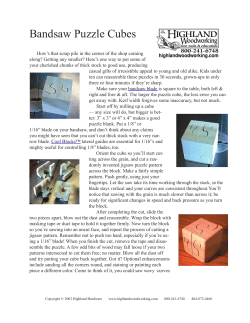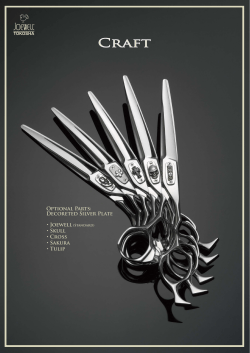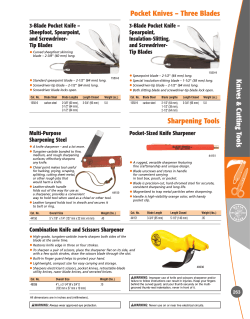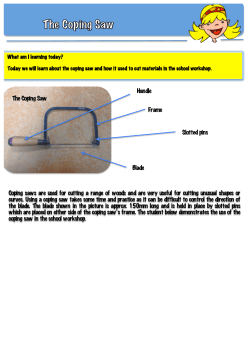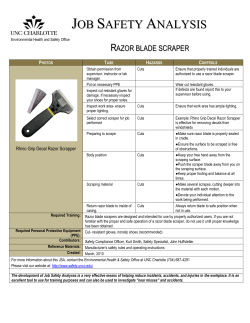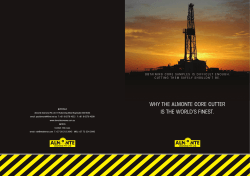
Document 371158
H. c. HARVEY.,
PAPER FEEDING MECHANISM.
v
.
APPLIICATION FILED MAY 18. I917
Patented Nov. 13, 191?,
1,246,592.
3 SHEETS-SHEET l.
"c6144
,
‘
("W MM;
01/
Hamid (If/aw?
_
'
g?
'
H. C. HARVEY.
PAPER FEEDING MECHANISM.
APPLICATION FILED MAYIB. 1911.
1 $46,592.
¥a$ented Nov. 13', 1917.
A
@WMXM
Harald CZ Ham/e7
W
H. C. HARVEY.
PAPER FEEDING MECHANISM.
APPLICATION FILED MAY I8, I917-
Pa’tented
13,
3 SHEETS-SHEET 3.
I H6U’0Za7Q/7/arl/€y
v
W
c!(9 14M '
'
56;
I w.
<55
.
.
I
UMTED STATES PATENT OFFICE.
HAROLD C. HARVEY, 0F MILWAUKEE, WISCONSIN, ASSIGNOR'TO MILWAUKEE. LACE
PAPER’ COMPANY, OF MILWAUKEE, ‘WISCONSIN’-v
IPA'PEIBILFEEDING‘ 'MECHANISM.
Speci?cation of Letters Patent;
‘1,246,592;
Patented Nov. 13, 1917.
Application ?led-May 18, 19175- .SeriaTN'o: 169,425.
To all vwhom it may concern.‘
7 7
Be it known’ that I, HAROLD G. Hanvnga
citizen of the United States, and resident of
Milwaukee, in the county of Milwaukee and
State of lVisconsin, have invented certain
new and useful Improvements in Paper
Zine of my invention, ‘showing the-removing
blade just’ engaging: several of the sheets of
material: for removing the same therefrom.
Feeding Mechanisms; and I do hereby vde
N Fig. 5 is a diagrammatic View similar to
Fio‘. 4. showing this removing. blade as in
60
fully extended position with several of the
sheetsof material on its outer end.
, Fig; Sis a diagrammatic view similar to
clare that the following is a full, clear, and Fig.
5 show-ing the removingblade as being
exact description thereof.
._ .
_
retracted,
and
My invention relates to certain new and
Fig. 7 isa view- similar to Fig. 6 showing
‘useful improvements in paper feeding mech
10
65
anisms for machines used in the manufac_ the removing blade as further retracted, the
ture of paper bonbon cups or the like, and sheets of material carried thereby having
is an improvement over the machine de been removed by the removal‘ means.
In the accompanying drawings 1 have 70
scribed in my pending application filed shown my improved feeding. mechanism
March 6, 1917, Serial Number 152623.
One of the objects of the invention is to applied to certain portions of an ordinary
provide a simply constructed ‘(mechanism paper bonboncup formingmachine, but it
whereby one or more sheets of paper may be
is obvious it may be used on various ma
75
removed from the stack containing a plu chines and also for feeding. other material
han
paper,
for
instance
sheets
of
cloth.
rality of sheets and deliver it to an apparatus
for conveyance to a point where it may be Therefore, only so much of the cup form
ing machine has-been illustrated as to show
further operated upon.
An additional object is to provide novel a complete and operative paper feeding
mechanism.
means for removing one or more sheets from
the stack so as to prevent the disarrange
ment of the stack while being‘ acted upon.
A still furtherobject isto provide a sim
80
' Referring now more particularly to the -
several ?gures of the-drawings‘, it will be
seen that thenumeral l designates a table
of a cup forming machine‘, the same’ being
ply constructed device‘for cooperating with supported
by. suitable; supports 2V and having
a reci rocative plate for removing one or
rotatably
mounted there-above a: circular
more spheets of material from the stack.
delivery‘ plate3, having; a plurality of con
85
With the above and other objects in view centrically arrangedv circularv openings ~ Ll.
This plate 3 is adapted for rotation by any
; means (not shown) and is pivoted 90
struction, combination and arrangement‘ of suitable
,
parts, substantially as hereinafter described at 5 to the table 1.
My invention is so arranged that'it may
and particularly de?ned by the appended
which will appear as the description pro
ceeds, my invention resides in the novel con
35
automatically feed one or more sheets of
claims,eit being understood that changes in paper
of’appropriateisize and shape'to each
the precise embodiment of the herein‘ dis
40 closed invention may be made without de
parting from the spirit of the invention.
In the accompanying drawings 1 have
illustrated one complete example of the
physical embodiment of my invention con
structed according to the best mode I have
so' far devised for thepractical application
of the openings at as the plate 3 revolves, 95
therefore the magazine'6 which is to contain
the'plurality of sheets of paper is disposed
adjacent said plate 3 as later described.
Thev magazine is mounted in. a bracket
plate 7 disposed‘ beneath the table- 1 and se 100
cured to the supportv 2 by any suitable fas
and comprises the vertical guide
of the principles of my invention, in- which; tenings,
rod members‘ 8 having'their upper ends ex—
Figure 1 is a plan view of my invention,
50
with parts broken away tomoreclearly illus
tending the proper. distance. above the-table
trate details of construction.
portion 9' carried’ by, one end oft-he~v table.
The sheets of material are adapted to be
Fig. 2 is a sectional view taken’ on line
2-—'—‘2 of Fig. 1.
1, which is about theeheight of a raised' 105
~
.
Fig. 3 is a sectional view taken on line placed between, the guide rods 8" and? slid
3-—3 of Fig. 1.
55
. i
Fig. eisa diagrammatic view of the-mags..
ably mounted in the. magazine is a suitable
ten'sioning device: for urging. the sheets up 110
2
1,246,592
wardly. This tensioning means consists of rod 36, having journaled in its lower end
a lift or plunger 10 carrying an upwardly a roller 37 tracking upon a cam 38 also
extending rod 11 which has secured to its ?xed upon the shaft 19.
‘
lower end a toothed rack 12. The rod 11
The rods 34 and 36 are slidably mounted
and rack 12 are slidably mounted in the in spaced horizontal shelves 39 and 40, and
bracket plate 7 and a similar bracket plate
7’ secured to the support 2 beneath said
plate 7. The means for urging the plunger
10 upwardly consists of a weight 13 carried
by one end of a cord or wire 14 which passes
15
the rock lever 35 is pivotally supported in
a bracket 41 ?xed upon the shelf 40. The
cam 38 is so positioned upon the shaft ‘19
as to permit the simultaneous movement of
the stop 33 with the plunger 10, and the
over a pulley 15 supported from the plate roller 37 is retained upon the cam 38 by
7 ’ and thence over a pulley 17 carried by the means of a spring 42 mounted upon- the
lower end of the rack bar 12, and then hav rod 34 and exerting an upward pressure
ing its end 18 ?xed to the plate 7’ as more thereon.
‘
clearly shown in Fig. 1.
'
For intermittently removing one or more
F or overcoming the pressure exerted by sheets from the-plurality, a reciprocating
80
the weight 13 in order to allow the plunger sheet removing blade 43 is employed similar
10 to drop, for reasons‘later described, cam to that described in my pending applica
controlled means are employed in connection
with the power driven shaft 19. These
means consisting of a vertical sliding rod
20 normally urged downwardly by a spring
arrangement 21, the rod 20 being slidably
mounted in plate 7 and bracket 22 mounted
upon said plate 7’. The upper end of the
rod 20 is forked or bifurcated to pivotally
receive one end of a link member 23, the up
per end of which is bifurcated to pivotally
tion, it being in pitman connection with the
driven shaft 19 by means of pitman 44, a
weight 45 being employed to assure the
quick return thereof. This blade is pro~
vided with a suitable adjusting device 46’,
as described in said pending application, for
adjusting the same for removing the de
sired number of sheets of material.
In the operation of my device, the blade
43, which has its inner end 46 tapered. and
engage one end of a rock lever 24 pivoted in formed with an abutment 47 at the termi~
the upper end of a bracket 25 carried by the nation is moved forward, and its end 46
plate 7, the other end of this rock lever
between the sheets of material sep
having journaled therein a roller 26 tracking inserted
arating
several
sheets from the plurality.
upon a cam 27 driven by the shaft 19.
35
This cam is so arranged as to, at the de~
sired step in the operation of my device, the stop 33 as before described, and a sheet
allow the spring 21 to draw the rod 20
downwardly permitting the angular lever positioning member or stop 48 is employed
28 pivoted in the slot 29 of the rod 20 to
engage the teeth of the rack bar 12 and
40
This angular lever 28 carries a spring 30
to insure the disposition of the sheet upon
the end of the blade 43, said vstop 48 being
also cam operated to permit the same to
the blade 43 at the proper time.
As above stated, the stop 48 is cam oper
ated and has its arm 49 slidably mounted in
the table 1, and pivoted to a rock lever 50
bearing against the rod 20 for normally
urging its tooth engaging lower end out
wardly toward the rack bar 12, and has having a roller in its free~end tracking
journaled in its upper end a roller 31 adapt
ed to ride upon the slanting cam face 32 of
50
100
hence overcome weight 13, dropping the drop from out of the path of movement of
plunger 10.
45
The cams 27 and 38 are so timed as to per—
mit dropping the plunger 10 vand lifting
a lug carried by plate 7 when the rod 20
is drawn upwardly by the cam 27, as will
be readily apparent from an inspection of
110
upon a cam 51 mounted upon the drive
shaft 19.’ The cam 51 is so disposed upon
the shaft 19'as to drop the stop 48 just at
the moment the tapered end of the blade
43
reaches the same, thus allowing the blade 115
Figs. 1 and 2. ‘When the cam 27 is in its to continue
the position shown in Fig. 5
position shown in Fig. 2, the lever 28 will which is a to
little beyond the opening 40f
be out of engagement with the rack bar 12 disk 3 registering therewith.
'
hence allowing the weight 13 to exert an
Upon
the
return
of
the
blade
43
to
the
upward pressure against the sheets of ma position shown in Fig. 6, a detent in the
terial, but when the cam is in a position form of a pin 52 drops into engagement 120
just opposite to that just described, the lever with the blade 43 to the rear of the sheets
28 will be in a position as shown in Fig. 4.
60
carried thereby. The detent 52 is also cam
For limiting the upward movement of the operated
being pivoted at one end to a rock
sheets of material, a cam operated stop 33 lever 53 having its other end pivoted to a
is employed disposed directly over the mag rod 54 having journaled in one end thereof
125
azine and having its upwardly extending
a roller 55 tracking upon a cam 56 ?xed
rod 34 bifurcated and pivoted to one end to
the driving shaft 19.
of a rock lever 35 having its other end
As
shown in Fig. 7, when the blade is
65 pivoted in the upper end of a cam operating
further retracted,.the detent 52 removes the
130
1,246,592
sheets from off the blade permitting them the plurality to separate a sheet therefrom,
to drop into the registering openings 4,and a sheet positioning member normally dis
when the blade is fully retracted all of the posed in the path of movement of said blade,
parts return to normal position, which is and means for moving the member out of
illustrated by Figs. 1 and 2.
-
. .
'
It is thought that from the foregoing de
scription taken in conneetion'with the ac
companying drawings, the operation of my
the‘ path of movement of the blade when the
70
latter is partially through the plurality of
sheets.
6. In a mechanism of the class described,
invention will be clearly understood and a magazine adapted to receive a plurality
hence further description thereof is thought of sheets of material, a stop disposed above
the magazine, a plunger slidably mounted,
unnecessary.
‘
in the magazine, the sheets of material be
W'hat is claimed is :—
I
1. In a mechanism of the class described, ing disposed between the stop and plunger,
a magazine adapted to receive a plurality a reciprocative removing blade adapted to
of sheets of material, a stop disposed adja remove a sheet from the piurality, and 80
cent the magazine, a plunger normally ‘means for assuring the proper positioning
urged against- the plurality of sheets, the of the sheets to be removed upon the remov
sheets of material being disposed between ing blade.
7. In a mechanism of'the class described,
the stops and plunger, means for moving
the stop and plunger away from each other a magazine adapted to receive a plurality of
85
in unison, and means for removing a sheet sheets ‘of material, a sheet removing blade
from the plurality.
I
2. In a. mechanism of the classdescribed,
movable through the plurality of sheets in‘
one direction to separate a sheet therefrom,
a magazine adapted to receive a plurality of said sheet being carried beyond the maga
sheets of material, a stop disposed adjacent zine by said blade, means for returning the
9O
the magazine, a plunger normally urged blade to its initial position, and means mov
‘against the plurality of sheets, the sheets of able into engagement with the sheet of mate
material being disposed between the stop rial prior to the actuation of the last men~
and plunger, means for removing a sheet
0. (Jr
tioned means.
.
8. In a mechanism of the class described,
from the plurality, means for moving the
stop and plunger away from each other a magazine adapted to receive a plurality
upon movement of the sheet removing means of sheets of material, a reciprocative pin dis
in one direction, and means for moving the posed adjacent the magazine, a sheet remov~
stop and plunger toward each other upon ing blade movable through the plurality of
movement of the sheet removing means in sheets and beyond said pin, a sheet being
the reverse direction.
the magazine, a plunger slidably mounted behind the sheet to remove the same from
in the magazine, the sheets of material being the former.
9. In a mechanism of the class described,
disposed between the stop and the plunger,
rality, and cam operated means for simul
100
carried toward the magazine by said blade,
8. In a mechanism of the class described, means for returning the bladeto its initial
a magazine adapted to receive a plurality position, and means for moving the pin into
of sheets of material, a stop disposed above the path of returning movement of the blade
means for removing a sheet from said plu
95
105
a magazine adapted to receive a plurality of
sheets of material, a reciprocative sheet re
taneously lifting the stop and dropping the moving blade movable through the plu
110
sheets of material, a plunger engaging the ciprocative pin movable at right angles to
plurality of sheets, means normally urging the path of movement of the blade, means
the plunger in one direction, means for re for returning the blade to its initial position
115
rality of sheets in one direction to separate
plunger.
4. In a mechanism of the class described, a sheet therefrom, said sheet being carried
a magazine adapted to receive a plurality of beyond the magazine by said blade, a re
50
moving a sheet from the plurality, means
after having passed through said plurality
of sheets, and means for moving the pin
rection including a. rack on the plunger, a into engagement with the blade prior to the
reciprocative rod, a lever pivoted to the rod, return movement of the latter.
10. In a mechanism of the class described,
means for reciprocating the rod whereby to
cause the lever to engage the rack and move a magazine adapted to receive a plurality
the plunger against the action of the ?rst of sheets of material, a sheet removing blade
mentioned means, and means for disengag movable through the plurality of sheets in
ing the lever from the rack comprising a one direction to separate a sheet therefrom,
lug to be engaged by the lever when the an abutment on said blade, said sheet being
for moving the plunger in the opposite di
60
rod is moved in one direction.
5. In a mechanism of the class described,
120
125
engaged by said abutment and carried be
yond the magazine with said blade, a sheet
a magazine adapted to receive a plurality of positioning member disposed in the path of
sheets of material, a blade movable through movement of said blade, a detent, means for
130
1,246,592
moving the member out of the path of move mounted in the magazine, a stop disposed
ment of the blade when the latter has above the magazine, means for normally urg
reached a predetermined position, and means ing said plunger and stop toward each other
for moving said pin into engagement with to hold the sheets of material therebetween,
the blade behind said abutment, whereby to a sheet removing blade adapted to remove a
remove the sheet from the blade upon return sheet from the plurality, a sheet positionino'
movement thereof
11. In a mechanism of the class described,
40
member normally disposed in the path 0?
movement of the blade, a pin movable into
a magazine adapted to receive a plurality engagement With the blade when the same
10 of sheets of material, a shiftable sheet re~ is in one position, and means for successively
45
moving blade movable through the plurality moving the stop and plunger away from
each other, shifting said iblade, moving the
tioning member disposed in the path of sheet positioning member out of the path
of sheets, a vertically movable sheet posi
movement of the blade, a normally raised of movement of the blade, and moving the
vertically movable pin, means for shifting pin into engagement with the blade, and
the blade to separate a sheet from the plu
rality, and means for successively depressing
the sheet positioning member and pin.
20
50
means for returning the blade to its initial
position.
14. In a mechanism of the class described,
12. In a mechanism of the class described, a magazine adapted to receive a plurality
a magazine adapted to receive a plurality of sheets of material, a stop disposed above
55
of sheets of material, a shiftable sheet re
the magazine, a plunger slidably mounted
moving blade movable through the plurality in the magazine, the sheets of material be
of sheets, a vertically movable sheet position ing disposed between the stop and plunger,
ing member disposed in the path of move ‘a reciprocative removing blade adapted to
ment of the blade, a normally raised verti
remove a sheet from the plurality, means for 5 9
cally movable pin, means Jfor shifting the assuring the proper positioning of the sheets
blade to separate a sheet from the plurality, to be removed upon the removing blade,
means for disposing the member out of and a detent for removing sheets of material
the path of movement of the blade as the from the end of said blade upon its return,
30
latter approaches the former, and means for
moving the pin into engagement with the
blade.
substantially as described.
In testimony that I claim the foregoing I
have hereunto set my hand at Milwaukee,
18. In a mechanism of the class described, in the county of Milwaukee and State of
a magazine adapted to receive a plurality Wisconsin.
35
of sheets of material, a ?ange slidably
HAROLD C. HARVEY.
Copies of this patent may be obtained for ?ve cents each, by addressing the “Commissioner of Patents,
Washington, D. G.”
Cir
© Copyright 2025

